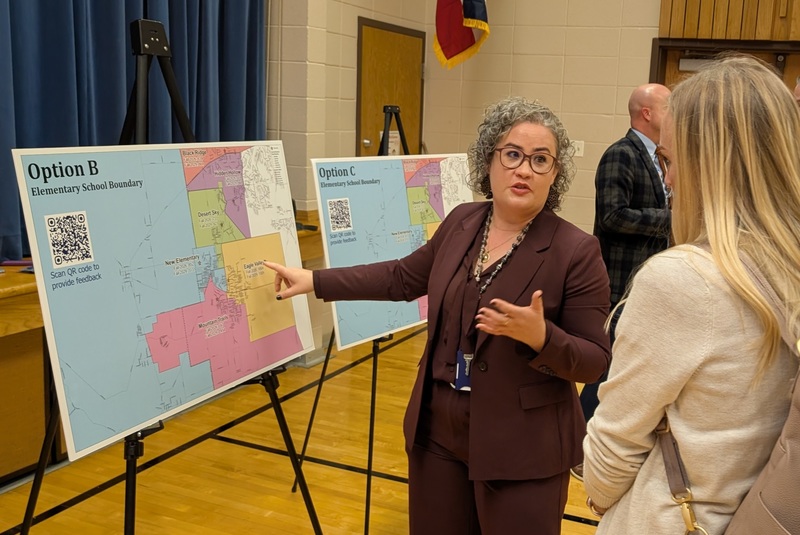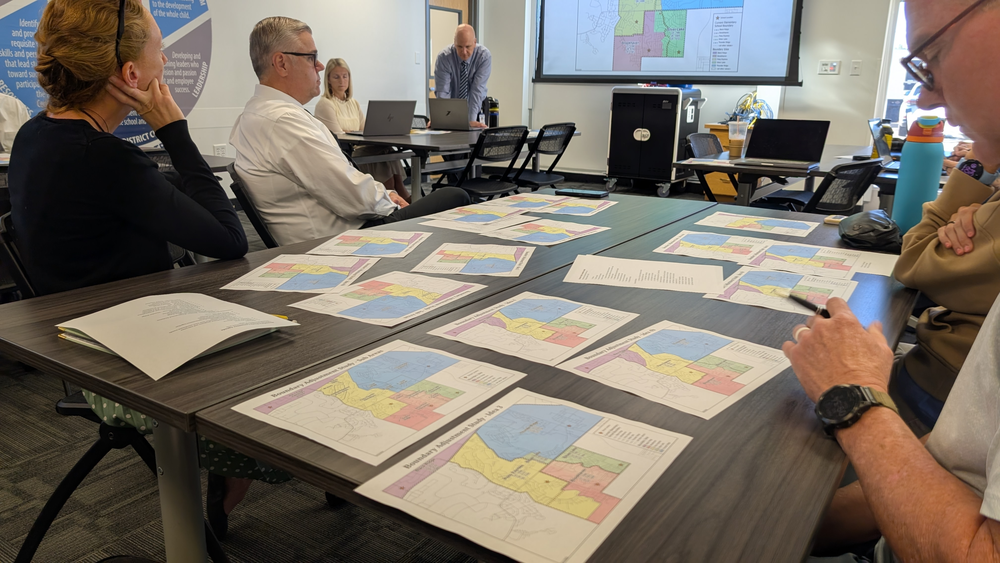Rapid growth and changing demographics often necessitate adjustments to school boundaries. Our board follows a thorough and deliberate process to determine the best boundaries if a change is needed.
The main goal of a boundary study is to ensure schools are appropriately populated, effectively managing student enrollment across the district. A variety of factors drive this need, including changes in neighborhood populations, new residential construction, and the fluctuation of programs like Dual Language Immersion, Special Education and Advanced Learning Lab.
"One of the greatest challenges in the boundary study process is balancing competing priorities,” said Derek Farnes, Director of Operational Analytics.
“Our primary goal is to support student success through strong educational programs and improved outcomes. At the same time, we must be responsible stewards of taxpayer resources by effectively utilizing school capacity, as well as considering students proximity to their school, preserving neighborhood and community cohesion, and trying to minimize that disruption,” he said.
Alpine School District currently has three separate boundary studies underway, involving 13 schools.
The boundary adjustment process can feel challenging, Farnes admits. He says part of the reason is that because it is so comprehensive, it can be hard to identify a single obvious factor on which to make a boundary decision.
"Boundary discussions are some of the most emotionally and logistically complex decisions a school board makes,” said Joylin Lincoln, Alpine School District board member for district 2. “The hardest trade-offs usually involve balancing community connection with equitable access.”
Boundary changes must be approved by a majority of the school board.
State law guides the school board in conducting the boundary adjustment process, which involves several required steps:
Notify parents of an affected school of the potential of a boundary change
Hold at least one public hearing on potential boundary changes
Allow for public comment on boundary changes during at least one regular board meeting
Alpine School District takes additional steps:
Conduct boundary committee meetings involving school leaders and parents
Hold open houses at or near the affected schools
These steps help board members consider all viewpoints. Ultimately, Lincoln says, the thoroughness of the process results in better boundaries as well as a better understanding of the needs of the entire community.
 Jessie Shepherd is a parent of a student at one of the currently affected schools. She has participated in a boundary committee.
Jessie Shepherd is a parent of a student at one of the currently affected schools. She has participated in a boundary committee.
“It was nice to see that the boundary changes were taken seriously and acknowledged that these changes would affect family units and the dynamics between families within their communities,” said Shepherd. “I’m glad that my thoughts and concerns were taken seriously and openly discussed. From the meeting, it was clear to see that the district takes this decision very seriously, and are considering all angles.”
“Everyone loves their school and hopes a different neighborhood will move, and honestly, that’s a good problem to have,” Lincoln said.
The process is complex and can get messy, but it's designed to lead to decisions that ultimately serve the best interests of the students and the community.
“I was pleasantly surprised that so many different viewpoints were in the same room and able to have a discussion about this important decision with respect and gratitude,” said Shepherd.
“Boundary work isn’t just about lines on a map; it’s about ensuring every child has access to an excellent education, no matter which side of the line they live on, said Lincoln.

